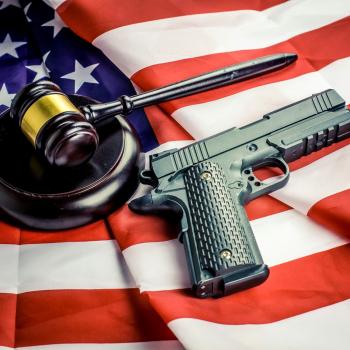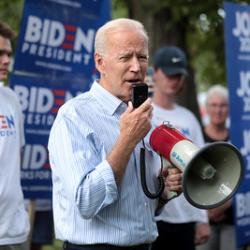I’ve often pointed out that current incarnation of the Republican party is incredibly – and most imprudently – cavalier with the rhetoric of violence. A standard response is to dig up some left-wing violent rhetoric. But this really misses the point, which that violent rhetoric on the right is now mainstream – so mainstream that it barely warrants any comment. It is now the case that a good number of leading Republicans, including president candidates, have used violent imagery or threatening rhetoric.
Consider some recent examples. Think about Palin’s “don’t retreat, reload” rhetoric. Think of the tea party calls to “take out” Harry Reid and resort to “second amendment remedies” in Nevada. Think of presidential candidate Michelle Bachmann calling for people to become “armed and dangerous” against cap-and-trade. Think of the health care debate, where death threats forced Bart Stupak to resign from Congress and Joseph Cao to vote against the final healthcare bill. Think of senator James Inhofe claiming that a “revolution” was coming. Think of congressman Steve King expressing sympathy with a domestic terrorist who flew a plane into a building and killed a person.
The latest – and probably the worst – example is presidential candidate Rick Perry’s threats against Federal Reserve Bank governor Ben Bernanke. Specifically, Perry said it was “treasonous” for him to print money before the election to help Obama and that, for such a sin, “we would treat him pretty ugly down in Texas”.
But this is all just the tip of the iceberg. Violent rhetoric simply suffuses the noisy tea party wing. Just look at some of the violent gun rhetoric from the last election, very nasty stuff from minor candidates that often flew below the radar.
To put it bluntly, the culture of violence in the United States today is a huge problem – from the cheapening of life in popular culture, to the worship of the military and belief in a divinely mandated cleansing power of American weaponry, to the fetish with guns and glorification of a violence-riddled frontier past. All of this comes together in the modern tea party movement. There seems to be a great media myth about the tea party appearing from nowhere, full of passion and idealism. But this is rubbish. As a couple of political scientists who have investigated the origins of the tea party have concluded:
“Past Republican affiliation is the single strongest predictor of Tea Party support today…They are overwhelmingly white, but even compared to other white Republicans, they had a low regard for immigrants and blacks long before Barack Obama was president, and they still do. More important, they were disproportionately social conservatives in 2006 — opposing abortion, for example — and still are today. Next to being a Republican, the strongest predictor of being a Tea Party supporter today was a desire, back in 2006, to see religion play a prominent role in politics.”
It’s not about small government, and it’s certainly not about the recession. It’s just the same old southern-based faux-populist race-tinged cultural politics in different clothes. Michael Lind puts it well. Noting that the tea party is overwhelming southern in its origins, he argues that:
“Today’s Tea Party movement is merely the latest of a series of attacks on American democracy by the white Southern minority, which for more than two centuries has not hesitated to paralyze, sabotage or, in the case of the Civil War, destroy American democracy in order to get their way.”
And we all know their historical attitude to violence. Conclusion: it’s the culture, not the economy, stupid.











